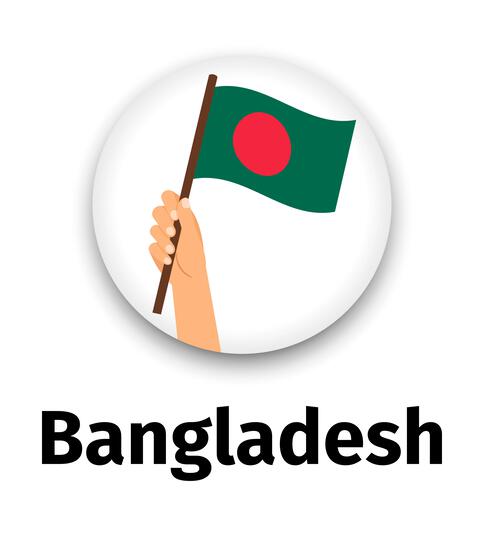📍 Bangladesh | ✊ Grassroots Empowerment | 🕊 Community Justice
1. Purpose of the Toolkit
This toolkit provides practical steps and tools to help rural communities and grassroots organizations:
-
Build local human rights committees.
-
Organize community dialogues and forums.
-
Strengthen solidarity among diverse groups.
-
Create early response systems to prevent violence and discrimination.
-
Turn ordinary citizens into local defenders of justice.
2. Guiding Principles
-
🕊 Human Rights Start Locally — People have the right to safety, dignity, and equality in their everyday lives.
-
✊ Community Power Matters — Local action is often faster, more trusted, and more effective than distant bureaucracy.
-
🤝 Solidarity Protects Everyone — An attack on one group is an attack on all.
-
⚖ Inclusion Is Essential — Ensure participation of minorities, women, youth, elders, and marginalized voices.
-
🔔 Prevention Is Better Than Reaction — Communities can prevent injustice before it escalates.
3. Step-by-Step Guide to Forming a Local Human Rights Committee (LHRC)
Step 1: Community Sensitization
-
Organize an informal village meeting or courtyard session (uthan boithok).
-
Discuss what “human rights” mean at a local level (land, education, safety, dignity, equality).
-
Use storytelling and real-life local examples to make concepts accessible.
-
Identify local challenges (e.g., land grabbing, harassment, discrimination, violence).
Step 2: Identifying Leaders and Volunteers
-
Encourage inclusive participation — not just village elites.
-
Ensure representation from:
-
Minority or indigenous groups
-
Women and youth
-
Religious/community leaders
-
Teachers, farmers, workers
-
-
Nominate or elect 7–15 committee members through open discussion.
Step 3: Defining Roles and Responsibilities
Suggested committee structure:
-
Chairperson: Leads meetings and public engagements.
-
Secretary: Keeps records, meeting minutes, and reports.
-
Volunteer Coordinator: Manages early warning & community mobilization.
-
Communications Focal: Liaises with CSOs, authorities, and media.
-
Youth/Minority Representative: Ensures inclusivity.
The LHRC should:
-
Document incidents of rights violations.
-
Respond quickly to protect vulnerable groups.
-
Facilitate community mediation (nonviolent, rights-based).
-
Refer serious cases to legal aid or authorities.
-
Mobilize solidarity actions when needed.
Step 4: Capacity Building
-
Conduct basic human rights awareness training (2–3 sessions):
-
Rights & responsibilities under national law and international standards.
-
Practical protection measures for vulnerable groups.
-
Nonviolent communication and conflict resolution.
-
-
Partner with local NGOs or human rights defenders to co-facilitate.
4. Organizing Village-Level Dialogues & Forums
Why Dialogue Matters:
-
Builds trust and solidarity.
-
Helps identify shared problems and practical solutions.
-
Strengthens collective responsibility.
How to Organize:
Step 1: Planning
-
Set a clear topic: e.g., “Protecting Minority Rights in Our Village”, “Land Justice”, “Youth Against Violence”.
-
Choose a neutral and accessible location (school yard, community center, courtyard).
-
Announce date and time at least 7–10 days in advance.
Step 2: Inclusive Invitations
-
Ensure invitations reach all groups — minorities, women, youth, elders.
-
Use multiple methods: posters, mosque/mondir/madrasa announcements, word of mouth.
Step 3: Facilitation Tips
-
Begin with a circle of trust — people seated in a round formation.
-
Use local language and storytelling.
-
Set ground rules: no interruptions, no hate speech, respectful engagement.
-
Allow marginalized voices to speak first or with protection.
Step 4: Documentation & Follow-Up
-
Assign a note taker.
-
Identify action points and who will follow up.
-
Share key outcomes with the LHRC and wider community.
5. Tools & Templates
✅ Sample Agenda for First Dialogue Session
-
Welcome & Introduction (10 min)
-
What Are Human Rights in Our Village? (20 min)
-
Storytelling & Open Sharing (30 min)
-
Identifying Issues & Priorities (30 min)
-
Forming/Strengthening LHRC (20 min)
-
Next Steps & Commitments (15 min)
✅ Sample Early Warning Sign Checklist
-
Rising local tensions between groups.
-
Hate speech, rumors, or targeted threats.
-
Sudden visits or mobilization by outside actors.
-
Land disputes or resource conflicts.
-
Visible signs of intimidation.
✅ Sample Quick Response Plan
-
Immediate call to LHRC members.
-
Alert legal aid contacts/partner CSOs.
-
Document incident (time, place, witnesses).
-
Convene urgent community meeting.
6. Safety and Protection Guidelines
-
Protect victims and vulnerable witnesses — confidentiality matters.
-
Avoid confrontations with armed or violent actors.
-
Build alliances with trusted local journalists and rights groups.
-
Keep emergency contact lists (police, legal aid, NGOs).
-
Use mobile phones or messaging apps for secure alerts.
7. Partnerships and Support
Potential Allies & Partners:
-
Local NGOs and legal aid organisations
-
Human rights defenders networks
-
Faith-based and cultural leaders
-
Journalists and community media
-
Youth clubs and women’s groups
-
International partners (for training/resources)
8. Sustainability Strategies
-
Rotate leadership roles to avoid elite capture.
-
Encourage youth participation to keep the committee active.
-
Organise monthly meetings and public forums.
-
Build linkages with national networks for protection and advocacy.
-
Document success stories to inspire other villages.
9. Closing Message
“When people stand together, they become stronger than fear.
Human rights do not arrive from above — they rise from the ground.”
Building local human rights committees and organising village dialogues is a powerful, peaceful strategy to protect communities, strengthen democracy, and ensure no one is left behind.
✊ Prepared by: Minhaz Samad Chowdhury
Independent Human Rights Defender, Bangladesh
🌐 www.hr-defender.blogspot.com | www.bds.vision
📅 October 2025





.jpg)







No comments:
Post a Comment
Please validate CAPTCHA